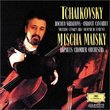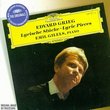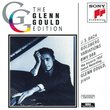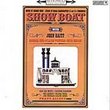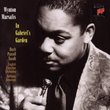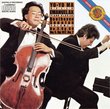| All Artists: Hector Berlioz, Pierre Boulez, Cleveland Orchestra Title: Berlioz: Symphonie fantastique; Tristia Members Wishing: 0 Total Copies: 1 Label: Deutsche Grammophon Release Date: 8/12/1997 Genre: Classical Styles: Opera & Classical Vocal, Symphonies Number of Discs: 1 SwapaCD Credits: 1 UPC: 028945343228 |
Search - Hector Berlioz, Pierre Boulez, Cleveland Orchestra :: Berlioz: Symphonie fantastique; Tristia
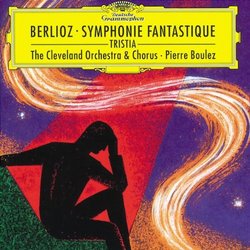 | Hector Berlioz, Pierre Boulez, Cleveland Orchestra Berlioz: Symphonie fantastique; Tristia Genre: Classical
![header=[] body=[This CD is available to be requested as disc only.]](/images/attributes/disc.png?v=430e6b0a) ![header=[] body=[This CD is available to be requested with the disc and back insert.]](/images/attributes/disc_back.png?v=430e6b0a) ![header=[] body=[This CD is available to be requested with the disc and front insert.]](/images/attributes/disc_front.png?v=430e6b0a) ![header=[] body=[This CD is available to be requested with the disc, front and back inserts.]](/images/attributes/disc_front_back.png?v=430e6b0a) |
Larger Image |
CD DetailsSimilar CDsSimilarly Requested CDs
|
CD ReviewsFor Experienced Berlioz Fans but not Beginners Wayne A. | Belfast, Northern Ireland | 04/05/2004 (4 out of 5 stars) "First, this disc is worth purchasing for the rarely recorded Tristia and the fine work by the Cleveland Orchestra and Chorus. The recording sounds wonderful. A problem (if that's really the word I want) may be the conductor. Years ago Boulez made disparaging remarks about Nineteenth Century music and one wonders if deep down his negative attitude has changed much. This is an almost too fastidious interpretation of an exceptionally rich and colorful work. Often, as an alternative to traditional interpretations, the intellectual approach works well with music of this era since it tends to bring out the "classical" aspects of a piece--no exception here. But this is Berlioz the Romantic and the playing--to do the piece justice--should be emotionally charged. I'd recommend it for experienced listeners who'd like to hear what early Berlioz could sound like when he's been given four cups of coffee and walked around the block a few times. I wouldn't recommend it for beginners who should be knocked on their hinders by this amazing music. The Colin Davis recording with the Concertgebouw on Philips is a first choice by many, especially in the 24-bit remastered version. Bernstein's on EMI is memorable (Last I looked that disc included a stunning Roman Carnival Overture with Previn conducting). Bernstein, bless him, never held back on music like this. There are plenty of other good choices including personal favorites by Plasson (EMI), Markevitch (DG) and Gardiner (Philips). To then hear Boulez do what he does best try his version of Stravinsky's Symphony of Psalms with the Berlin Philharmonic on DG--you could cut glass with it. In this modern repertoire he's untouchable. I hold back a star because, all said, I really don't think this is the way this piece should be played." Progressive Berlioz Brett A. Kniess | Madison, WI | 02/02/2006 (5 out of 5 stars) "Hector Berlioz is a great character of the musical world. His music, along with Beethoven, drive towards Romanticism by putting expressiveness above all other concerns. The famous Symphony Fantastique is a good, and famous example of this; in addition, Berlioz included a specific plot to accompany the music of the symphony, an innovation of the time. Subtitled, An Episode in an Artist's Life, the work is very much an autobiography of Berlioz. In five movements, the "Artist" deals with love (and his loved one) in a dream-like, opium-induced dream. The first movement, Reveries - Passions introduces the care-free Artist and the passion of their first meeting. The second movement is in waltz time, entitled A Ball, where the Artist and his lover dance. The middle movement is a Scene in the Country, where a peaceful afternoon turns stormy, as thoughts of possible deception invade the Artist's mind. The grotesque final two movements, March to the Scaffold and Dream of a Sabbath Night, are surreal portrayals of the Artist killing his beloved, viewing his execution, and the revelry of witches and demonic creatures at his gravesight. Not so far from reality, Berlioz's love, Harriet Smithson, married (although they didn't speak each others language, literally); Berlioz, at one point, became so enraged with mistrust, that he planned on killing his wife and himself; a faulty carriage ride delayed him, and he thought things through. The music of Symphony Fantastique has a natural dramatic progression. Innovative, from a Music Appreciation viewpoint, is the use of the idée fixe, a recurring musical motive to tie the movements and musical plot together (Wagner's leitmotif is based off of this); Berlioz uses the idée fixe to represent the beloved, and it is varied each time based on mood and situation. The orchestration is not overly grandiose, it is what he does with the instruments that is forward-looking; creating new timbres, playing with instrumental effects like col legno strings. The opening movement starts in a lazy, carefree manner, but when the beloved's theme comes in, the tempo picks up, and a bustling, eventually passionate, mood takes over; the idée fixe is in its purest and most straight-forward form here. The second movement's ball seems overly gentile at first; but a Romantic sweep is given to the waltz (one you would expect Beauty and the Beast to dance to); particularly, is the stunning harp duet heard clearly on this recording. The idée fixe is put into waltz time; a breathless dance increases in tempo for a stunning conclusion. A gentle pastoral peacefulness settles in on the third movement's country scene. A duet between English Horn and Oboe and a feathery lilting rhythm set the rustic scene; the lengthy and descriptive movement, again brings back the motive of the beloved, but the movement ends with seeds of mistrust. The procession to the scaffold is nearly pompous, with outbursts from the brass and bass trombone, and a wonderful bassoon feature; the beautiful idée fixe is heard right before the guillotine falls and the Artist's head falls in the basket musically; the brass end in a militaristic proclamation. The final Witch's Sabbath shows where Berlioz was well ahead of his time; cackling witches, medieval brass statements, sickly crowings of birds, the Dies Irae (Day of Wrath) chant sequence, provide a haunting and scary feast of witches. The idée fixe returns one last time in mocking form. The work ends in a blaze of glory. The coupling is Tristia, a choral/orchestral triptych on a theme of death. The first, Religious Reflection, is an optimistic view of death; also a colorful, chorale-like chorus with orchestra, full of passion. The Death of Ophelia, based off of Shakespeare, is the second part. For women's chorus, the strange story of Ophelia's odd death, is told vividly through perpetual motion, odd harmonic modal shifts, and an incessant short motive, indicating Ophelia's madness. The final is the Funeral March for the last scene of Hamlet scored for orchestra and wordless chorus, a unique predecessor to what Debussy and Ravel will do in another century. The trudging bass line leads the work from solemn melancholy to disillusioned anger. A fascinating and underplayed work, if not oddly programmed. Pierre Boulez leads the Cleveland Symphony Orchestra with success. Yes he is meticulous, following the score precisely (tempo and articulation), but Berlioz was a master of composing music, and his natural compositional expression shines through. While sometimes I don't feel the attack (sforzando) asked for is strongly emphasized under Boulez, most of the time the orchestra follows through well enough. In addition, the DG 4-dimension sound gives the American orchestra a full, glowing sound, evenly balanced, with great cohesive brass sounds, and closely miked harps; the sound is impeccable. The chorus in Tristia is not superb, but passable; and since the work is rarely heard and interesting, it works just fine. The program notes are informative, including an interview with Boulez about his approach and feelings of Berlioz works. The Symphony Fantastique times at 52 minutes, Tristia at 19 minutes, for a total of around 72 minutes; a generous CD. This is a good digital modern interpretation with excellent sound; for a period performance, I particularly enjoy Roger Norrington and the London Classical Players and on the modern side, Charles Dutoit on Decca has a mid-priced 2CD set with these works plus the 50-minute Lelio (the sequel to Sym. Fant.); but this modern recording is still delightful." Simply fantastic FrKurt Messick | Bloomington, IN USA | 10/21/2005 (5 out of 5 stars) "Berlioz' 'Symphonie Fantastique' is a very important piece of music. In his own commentary on the piece, he comments on his use of a repeating melody, an idée fixe (fixed idea). This symphony is in many ways a symphonic poem, a new sort of idea - even the structure of the symphony, being in five movements, is an innovation. This is a symphony that tells a story - one in which a gifted artist succumbs to drugs in despair over love; many saw Berlioz' own life being presented here, and he eventually dropped the narrative designations, allowing the movement headings to stand as sufficient enlightenment to the listener.
1. Rêveries - Passions (Passions) 2. Un bal (A Ball) 3. Scène aux champs (Scene in the Country) 4. Marche au supplice (March to the Scaffold) 5. Songe d'une nuit du Sabbat (Dream of a Sabbath Night) The first movement opens with a light piece that quickly becomes the idée fixe, the recurring melody. The second movement takes a simple waltz theme that goes up and down in many ways - this is perhaps meant to symbolise the isolation of a lovestruck person at the ball. The third movement has melodies drawn in horn and oboe, with rustic and romantic influences evident here. The fourth movement is much more dramatic, with horns and rushes that are anything but pastoral, and fifth movement draws on a piece from traditional requiems, the Dies Irae, together with ideas reminiscent of church bells and a graveyard. The second major piece here, Tristia, which is a trio of pieces written at different times, later collected as a group for chorus and orchestra. The first, the Méditation religieuse was composed in Rome during 1831. It is a setting for six-part chorus and small orchestra based on a poem by Thomas Moore. It uses horn and strings at the end to good effect. The second and third pieces come from Berlioz' work with Hamlet; La mort d'Ophélie and the Marche funèbre for the final scene of Hamlet both have interesting development and intonations. The performances by the Cleveland Orchestra and Chorus, under the direction of Pierre Boulez, with chorus master Gareth Morrell, are absolutely flawless. There is a perfect energy and perfect clarity of pieces here. The tempo is grand and appropriate for each piece, and the power particularly in the end of the Symphonie Fantasique reminded me of the similar power at the end of Berlioz' 'Te Deum'. This is a disc every music lover should have. " |

 Track Listings (8) - Disc #1
Track Listings (8) - Disc #1